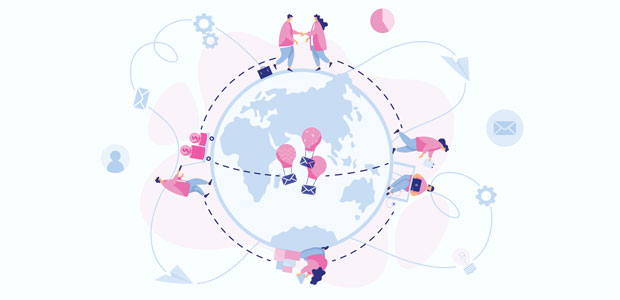
Why it’s time for the anywhere economy
Driven by the goods and services that address an increasing expectation, the anywhere economy is built upon solid foundations: anything, anytime, anywhere, all enabled by the Internet. After the traditional economy faltered during the pandemic, the anywhere economy surged. Companies like Zoom, Netflix and Amazon became providers of essential services for work, life and sanity.
Pre-pandemic, anywhere experiences including on-demand shopping and entertainment were on the up thanks to transformative technologies. But society-wide, this was still not the norm, but the exception. In 2020, anywhere experiences took off: working from home, online shopping or anything online for that matter; buying a house or a car, conducting a business meeting, or seeing a doctor, you did so remotely. Despite those in more frontline work could not take so much of an advantage of anywhere options, much of the global population did—at one level or another, and in many cases, for the first time.
The revolution in digital technology exacerbated by the pandemic, will not be forgotten either. Many historians will consider this revolution an inflection point in history. For just as the pandemic exposed our vulnerability to proximity, it also emphasised the need for digital interconnectivity to maintain businesses, services, and economies.
Remote working, once a luxury became essential, overnight. This was a watershed moment when people’s relationship to places changed fundamentally. In human history, this has happened twice before, though far more incrementally. The first time was the agricultural revolution, when nomadic hunters learned to farm, creating settlements and towns. The second time was the industrial revolution when people moved off farms to live near factories, concentrated in cities. This revolution gave us automation and mass production, which in turn, changed work, communities, families and society itself.
Today, the information economy has an even greater potential to change society than the smokestacks and production lines of the 19th and 20th Century. The ever-present internet is not only driving new businesses, it has also created the anywhere economy. The anywhere economy is driven by the goods and services that must be accessed anytime, anywhere, by the Internet. This builds jobs, ideas, and markets, and brings people together to fulfil a common purpose. While the traditional economy faltered during the pandemic, the anywhere economy surged.
This daily commute was eradicated from a large portion of the population's days, giving back those spending hours on trains and buses. Indeed, it was a challenge to decide what to do with all the free time we had got back. And during this free time, many found the time to ask themselves fundamental questions about what they wanted from life, resulting in the ‘Great Resignation’ and labour shortages, perhaps also, the post-war hedonism we saw in the 1920s and 1960s, admittedly muted by rising prices.
As well as accelerating the imperative of digital connection, the pandemic also reminded us what we missed, each other. The most successful businesses and institutions will combine the online experience, with the off. The businesses and governments that innovate to support this trend will be ahead of the market and on the right side of history. Going forward we will see the anywhere economy manifesting itself in the following ways:
- Augmented Experiences. Some ‘anywhere’ experiences will augment the in-person economy—for example, a wedding that most people attend in-person but can also also be attended virtually.
- Partial replacements. These are ‘anywhere’ experiences that partially replace their in-person equivalents—such as splitting time between home and the office, or being able to see a doctor virtually.
- Total replacements, in which if a functional process can happen remotely, this is where it will occur, anytime, anywhere.
To succeed in the anywhere economy, businesses must know when to separate the functional from the emotional. The face-to-face meeting required to create trust, empathy and understanding, with the administrative process, that must happen anywhere, at any time. An example of this is processing and agreements and contracts, rapidly and securely, or smarter decision making enabled by automated contract analytics.
Whether it’s a product or service that augments or replaces the in-person alternative, it must be able to serve the economy with greater dexterity. In the search for talent, this will be critical. According to a 2022 study by PwC, 11% of US workers would prefer to work full-time in the office, and 62% said they’d like to spend at least some time there. In the tech sector, a recent study has found that most generation Z workers want to remain in the office, while 42% of baby boomers want to retain some remote working.
Hybrid working is just one example of the anywhere economy driving the expectation for expediency, personalisation, and accessibility across a wide range of goods and services. With the right skills and commercial foundations, the anywhere economy will make employment and opportunity more available for a wider range of people, dispersed across a wider range of geographies, cultures and time-zones.
The anywhere economy is upon us, a silver lining in the dark cloud of the pandemic. In the years ahead, the anywhere economy will enable new ways of living and working by redefining the relationship between people and places.

